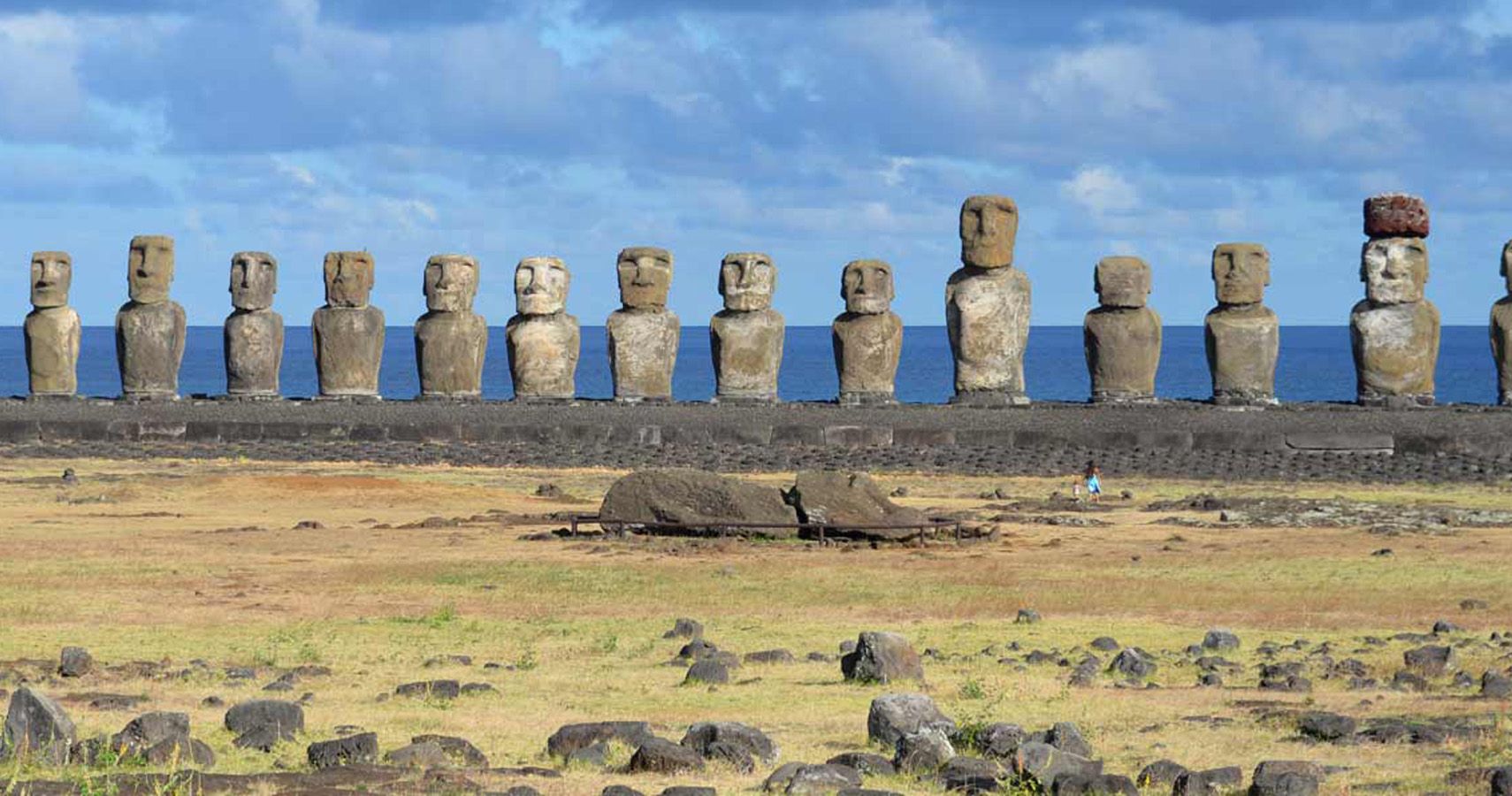Easter Island has long been a popular tourist destination, but visiting the island is going to become increasingly difficult, as erosion threatens its famous monuments and the government limits tourism. This tiny island in the Pacific Ocean is only fifteen miles across, but has become world famous thanks to the dozens of moai statues that dot the landscape, especially at the coastline. Also known as the 'Heads' of Easter Island, these iconic monuments are believed to be representative of the ancestors of the early islanders who settled here, as well as their tombs.
Despite the far-flung location of the island, thousands of tourists flock here each year. In 2017 alone, more than 100,000 visitors came to the island to see the moai and to frolic on the beaches, and the tourism industry takes in over $70 million annually. Despite this, Chile (which took possession of the island in 1888) has decided to limit tourism in an attempt to preserve the island's heritage - although it may be erosion, not tourism, that causes the most damage.
In March of this year, congress voted to limit the number of visitors to the island, both in terms of numbers and the length of time that they are allowed to stay. As of August 1st, tourists can only stay on Easter Island for a maximum of thirty days (down from ninety), and will have to provide a hotel reservation or letter of invitation from a resident in order on arrival. New residents will also be limited, with only those related to someone from the Rapa Nui people, working for the government, or creating their own economic activity being allowed to join the island population. A maximum capacity for the island will also be created, although the numbers for this have not yet been confirmed.
Although the measures to reduce the number of people on the island are sure to help preserve the local culture and limit the environmental strain on the island caused by a growing population, this is not the only threat facing the Heads of Easter Island. Rising sea levels are causing massive erosion around the island's coastline, and the cliffs that the monolithic statues are standing on have begun to crumble. There is fear that should the cliffs continue to erode, the statues themselves will be next to fall into the sea and be lost forever.
Not only would the loss of these statues and other historic stone carvings on the island mean a massive drop in the tourism industry for Easter Island, but it would prevent archaeologists from continuing to discover the history of the civilization that built them. New information about the moai is being discovered all the time, including the fact that there are bodies underneath at least some of the heads, buried by earth over the centuries (and proving that this is not the first time the statues have dealt with environmental threats). Should the water levels continue to rise, the artifacts and remains buried with them will be gone, along with the stories they might tell us about this incredible early civilization.
There are some plans to try and save the monuments of Easter Island, however. A grant from the Japanese government has provided the funds to build a seawall in front of vulnerable areas, but it is not clear if this will be enough to stop the encroaching waves. There has also been talk of moving the statues to more secure locations, and moving stone carvings to a museum, but only time will tell if these measures are enough to save these iconic relics of the past.
Source: NewYorkTimes, Forbes, Digital Journal

